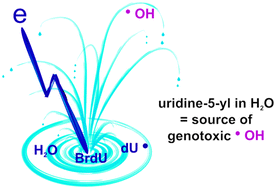An ESR and DFT study of hydration of the 2′-deoxyuridine-5-yl radical: a possible hydroxyl radical intermediate†
Abstract
The mechanism of radiation-induced frank strand break formation in irradiated 5-bromo-2′-deoxyuridine (BrdU)-labelled DNA is still unclear despite the proven radiosensitizing properties of BrdU. Combination of ESR spectroscopy and quantum chemical modelling points to a simple reaction between the uridine-5-yl radical and water molecules that produces the genotoxic hydroxyl radical.


 Please wait while we load your content...
Please wait while we load your content...